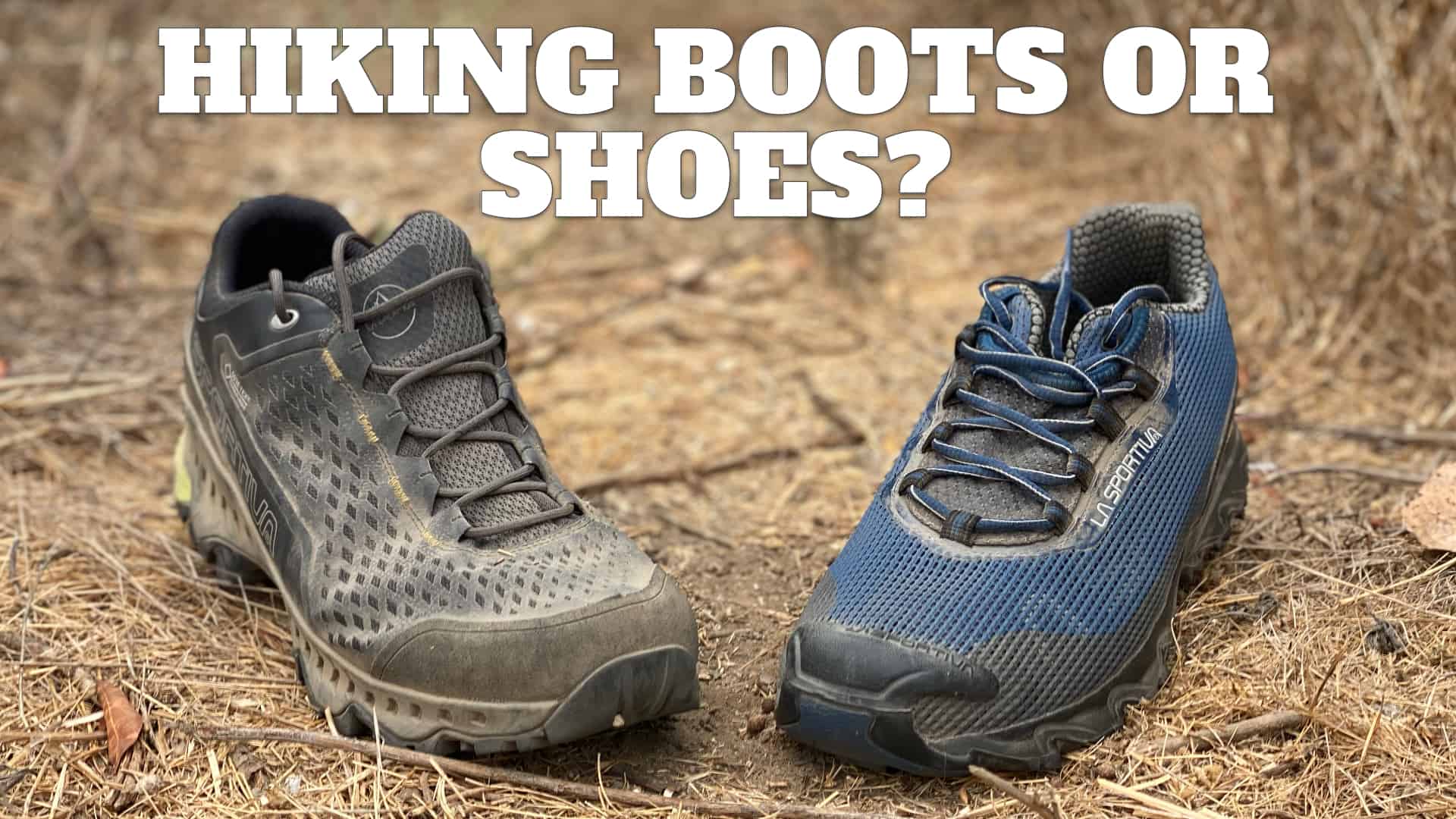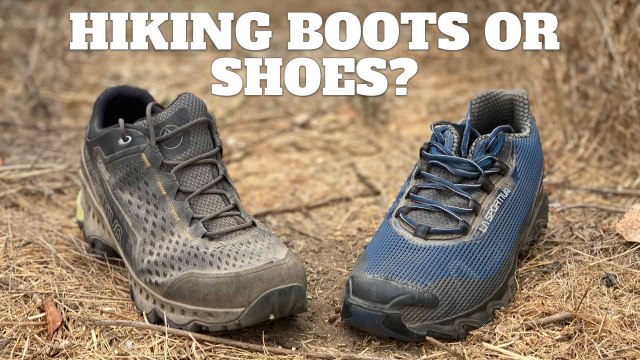There are a lot of people who love to hike and walk in the great outdoors but are unsure of what kind of shoes they should wear. Hiking shoes and walking shoes may look similar, but they actually serve different purposes. Here is a breakdown of the differences between hiking and walking shoes to help you decide which type of shoe is right for your next outdoor adventure.
Hiking shoes are designed to provide stability and support on uneven terrain. They have thicker soles with deeper treads to grip the ground and prevent slipping. The uppers of hiking shoes are usually made from tough, water-resistant materials like leather or synthetic fabrics to protect your feet from mud, rocks, and debris.
Walking shoes, on the other hand, are meant for use on level surfaces like sidewalks, trails, and roads. They have thinner soles with shallower treads and their uppers are usually made from breathable materials like mesh or suede.
There is a big difference between hiking and walking shoes. Hiking shoes are designed to provide support and stability on uneven terrain, while walking shoes are designed for flat surfaces. Hiking shoes have a thicker sole and a higher ankle to provide support when climbing or descending hills.
Walking shoes have a thinner sole and lower ankle to allow for easy movement.
What Kind of Footwear Is Best for Hiking?
Can I Wear Hiking Shoes for Walking?
Assuming you are talking about general walking shoes and not just any old hiking shoe, then yes, you can wear hiking shoes for walking. Hiking shoes are designed to provide good support and traction on all types of terrain, so they will be fine for walking on pavement or concrete. They may not be the most comfortable option if you are going to be doing a lot of walking, but they will certainly work in a pinch.
Can I Wear Regular Sneakers for Hiking?
Assuming you are asking if regular sneakers are sufficient for hiking, the answer is generally no. Hiking shoes or boots offer a number of features that regular sneakers do not which make them more ideal for hiking. For example, most hiking shoes have a Gore-Tex liner which makes them waterproof and breathable.
They also often have a higher ankle to provide support when walking on uneven terrain. Additionally, the soles of hiking shoes tend to be more rugged and provide better traction than regular sneakers.
Can You Wear Hiking Shoes on Pavement?
There are a variety of different types of shoes that can be worn when hiking, and each has its own benefits and drawbacks. One type of shoe that is often used for hiking is the hiking boot. These boots are designed to provide good support and traction on rough terrain, and they can be quite comfortable to wear.
However, they are not necessarily the best choice for walking on pavement.
Hiking boots tend to be heavy and bulky, which can make walking on pavement uncomfortable. They also have a tendency to slip on smooth surfaces like pavement, which can lead to injury.
For these reasons, it is generally advisable to avoid wearing hiking boots on pavement.
If you do choose to wear hiking boots on pavement, there are a few things you can do to minimize the risk of injury. First, walk slowly and carefully until you get a feel for how the boots behave on this surface.
Second, avoid walking in areas where the pavement is wet or slippery. Finally, be sure to wear socks that provide good cushioning against the hard surfaces of the boot.
What Makes Hiking Shoes Different?
Hiking shoes are designed to provide stability and comfort while walking on uneven terrain. They have a number of features that distinguish them from other types of footwear, including a robust construction, a lugged sole for traction, and often a waterproof or water-resistant upper.
Many hikers prefer shoes with a low profile and lightweight design, as they can be easier to walk in and don’t add much weight to your pack.
However, some people prefer heavier duty hiking boots for longer hikes or when carrying a lot of gear. Ultimately, it’s up to you to decide what type of shoe is best for your needs.

Credit: hikingguy.com
Difference between Hiking Shoes And Running Shoes
There is a big difference between hiking shoes and running shoes. Hiking shoes are made to protect your feet from the elements and provide traction on slippery or uneven surfaces. They usually have a waterproof layer to keep your feet dry, and a tough sole to protect against sharp objects.
Running shoes, on the other hand, are designed for speed and impact absorption. They don’t typically have the same level of waterproofing or durability, but they will be lighter weight and will help you move more quickly. When choosing footwear for a hike, make sure to pick shoes that fit the conditions you’ll be facing.
If you’re unsure, ask a salesperson at your local outdoor shop for advice.
Waterproof Hiking Shoes
Most hikers will agree that one of the most important pieces of gear on any hike is a good pair of shoes. After all, your feet are what carry you through miles and miles of terrain, so they need to be well-protected and comfortable. When it comes to choosing the right hiking shoes, there are a lot of factors to consider – from the type of terrain you’ll be tackling to the climate you’ll be hiking in.
But one factor that’s often overlooked is whether or not your shoes need to be waterproof.
If you’re planning on hikes that will take you through wetter conditions – think rainforests, rivers, or even just dewy mornings in spring – then waterproof hiking shoes should definitely be on your radar. Waterproof shoes will help keep your feet dry and comfortable, even when conditions are less than ideal.
They’re also great for keeping your feet warm in colder climates (like snowmelt season in the mountains).
Not sure if waterproof hiking shoes are right for you? Here are a few things to consider:
The type of terrain you’ll be hiking: If you know you’ll be dealing with a lot of water crossings or muddy trails, waterproof shoes can help keep your feet dry and prevent blisters. They can also make slippery rocks and roots much easier to navigate since they won’t get as slick when wet.
The climate you’ll be hiking in: If you’re planning hikes in warmer weather, waterproof shoes can actually make things more uncomfortable since they don’t allow your feet to breathe as well.
In this case, it’s often better to choose non-waterproof shoes and simply pack an extra pair of socks to change into if necessary. However, if cold weather is on the forecast (or even just chilly morning starts), waterproof shoes can help keep your toes from turning into popsicles by trapping heat next to your skin.
Hiking Shoes for Women
Hiking shoes are a very important piece of gear for any hiker, especially women. There are many different types and styles of hiking shoes on the market, so it is important to do some research before purchasing a pair. Here are some things to consider when choosing hiking shoes for women:
-The type of terrain you will be hiking on: This is probably the most important factor to consider when choosing hiking shoes. If you will be doing mostly trail hiking, you will need a shoe with good traction and support. If you plan on doing more off-trail hiking, or if you expect to encounter rocky or slippery conditions, then you will need a shoe with more aggressive tread and possibly additional ankle support.
-The fit: Hiking shoes should fit snugly but not be too tight. They should also have enough room in the toe box to allow your toes to wiggle freely. Make sure to try on a few different pairs before deciding which one is right for you.
-Waterproofing: If you anticipate any wet conditions while hiking, it is important to choose a shoe that has some form of waterproofing (e.g., Gore-Tex). This will help keep your feet dry and comfortable during your hike.
Conclusion
There are a few key differences between hiking and walking shoes. Hiking shoes are generally more rugged and have better traction, while walking shoes are designed for comfort and flexibility. Hiking shoes also have a higher ankle support to protect against rolled ankles, while walking shoes typically have lower profiles.
When choosing footwear for your next hike or walk, be sure to consider the type of terrain you’ll be covering and the level of support you need.
